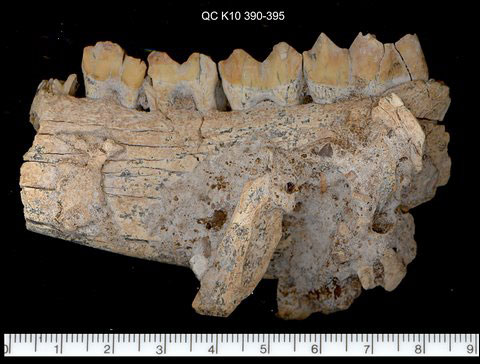Researchers who want to include surgeries in studies have to make first contact through non-medical administration staff who act as roadblocks, says a group of researchers whose planned leg ulceration study was hamstrung by a physician recruitment rate of 2% and who have published the reasons why so many surgeons did not participate.
The qualitative information, featured in the open access journal BMC Medical Research Methodology, may be of use to those designing trials of their own. Given the current health care debate in America, another layer of bureaucracy and the impact on research studies is one facet of the discussion that has been least considered.
Early modern humans living on the southern Africa coast employed pyrotechnology, the controlled use of fire, 72,000 years ago, to increase the quality and efficiency of their stone tool manufacturing process, according to a report in Science.
The international team of researchers deduces that "this technology required a novel association between fire, its heat, and a structural change in stone with consequent flaking benefits." Further, they say their findings ignite the notion of complex cognition in early man.
If their findings hold up, it could mean humans' ability to solve complex problems may have occurred at the same time their modern genetic lineage appeared, rather than developing later as has been widely speculated.
A real life Alice In Wonderland story is a little closer to reality now that researchers in China have created the first tunable electromagnetic gateway.
In a new paper, researchers from the Hong Kong University of Science and Technology and Fudan University in Shanghai have described the concept of a "a gateway that can block electromagnetic waves but that allows the passage of other entities" like a "'hidden portal' as mentioned in fictions."
The gateway uses transformation optics and an amplified scattering effect from an arrangement of ferrite materials called single-crystal yttrium-iron-garnet that force light and other forms of electromagnetic radiation in complicated directions to create a hidden portal.
The green of a tree's leaves is from the larger proportion of the chlorophyll pigment in the leaves. As days get shorter, less chlorophyll is produced and green is no longer dominant because yellow xanthophylls and orange carotenes are also present in the chloroplasts.
But why will the leaves of some trees be red in America yet yellow in Europe?
Did late Lower Paleolithic people hunt or were they scavengers? A University of Arizona anthropologist says that humans living at a Paleolithic cave site (Qesem Cave) in central Israel between 400,000 and 250,000 years ago were as successful at big-game hunting as were later stone-age hunters at the site, but earlier humans shared meat differently.
Qesem Cave ("Qesem" means "surprise") people hunted cooperatively, then carried the highest quality body parts of their prey to the cave, where they cut the meat with stone blade cutting tools and cooked it with fire.
Treelines are not responding to global warming the way previous projections said they should, according to the first global quantitative assessment of the relationship between warming and treeline advance published in Ecology Letters.
The study tests the consensus that treelines have been globally advancing in response to the warming climate since 1900.
 Study: Caloric Restriction In Humans And Aging
Study: Caloric Restriction In Humans And Aging Science Podcast Or Perish?
Science Podcast Or Perish? Type 2 Diabetes Medication Tirzepatide May Help Obese Type 1 Diabetics Also
Type 2 Diabetes Medication Tirzepatide May Help Obese Type 1 Diabetics Also Life May Be Found In Sea Spray Of Moons Orbiting Saturn Or Jupiter Next Year
Life May Be Found In Sea Spray Of Moons Orbiting Saturn Or Jupiter Next Year









